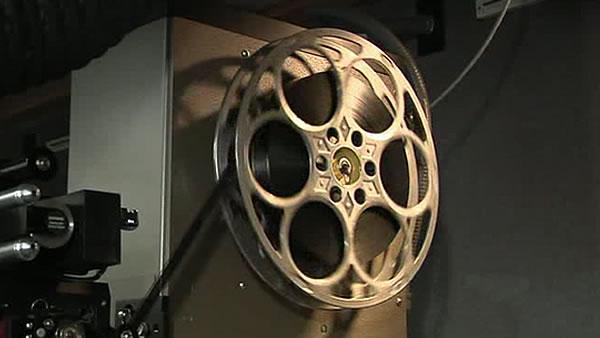Analogue editing is when you cut together pieces of Celluloid Film.
 At one point in film making, images were printed on to acetate negatives. Once that was done, they were then "spliced" (cut&stuck) together to form the reel of film. After the film was made, it would then be feed through a projector at a constant speed of 24 frames a second which then makes the pictures look like they are moving.
At one point in film making, images were printed on to acetate negatives. Once that was done, they were then "spliced" (cut&stuck) together to form the reel of film. After the film was made, it would then be feed through a projector at a constant speed of 24 frames a second which then makes the pictures look like they are moving.The Moviola
 Moviola was invented in the year 1924 and was invented by Iwan Serrurier. The Moviola was the first device that allowed directors to view the film they were making while it was being edited. This machine was used for feature length motion picture editing.
Moviola was invented in the year 1924 and was invented by Iwan Serrurier. The Moviola was the first device that allowed directors to view the film they were making while it was being edited. This machine was used for feature length motion picture editing.Video editing .
 Before digital technologies became available, magnetic tapes were used to store information-these are known as video tapes.
Before digital technologies became available, magnetic tapes were used to store information-these are known as video tapes. Video editing is the process of editing segments of these tapes using a device that mechanically put pieces of video tape together. The film has to be edited in the right order.
Digital Editing
Digital Media is a form of electronic media where data had been saved in digital form. Digital Editing is used on computers to order and manipulate this digital data. When it comes to Digital Editing, there are different programs such as: Adobe Premier, Avid and Final Cut Pro. Digital film making uses bits and bytes to record, transmit and reply images, instead of chemicals on film.
When it comes to digital editing, it is all electronically done so there is no need for printing or "splicing". This way of editing soon took over Video editing because of it being a quicker and cheaper way to edit. The best thing of this is that you can edit in any order.
When you edit in any order, it is called Non-Linear editing. This means you can edit a sequence from the end before you even edit the first scene in the film. The whole progress uses a electronic files that makes cutting and pasting text into a word documents.
The pros and cons analogue and digital editing
There are pros and cons on both Analogue and Digital editing.
The Pros in Analogue editing is that Analogue editing is quicker and precise for people who are filming. it is also safer to film because theres less chance of the film getting damaged. On the other hand, the Cons to Analogue editing such as if you make a mistake, you can't change it or take a retake of the scene you shot. Also, in the time of Analogue editing, there was no CD's or VHS' so it would be more expensive to film and it would be harder to carry. Another con to Analogue is that you could not have any communication with the person behind the camera because you can't edit out people talking.
The Pros to Digital editing is that you can put clips together in any order with also means you can film in any order you like. The Cons to Digital editing is that it could be hard for people to use because it is more complex to understand and may struggle when it comes to editing. Also, Digital editing relies on technology, so you never know if the technology you will be using will work or not or it could break while being used.
No comments:
Post a Comment